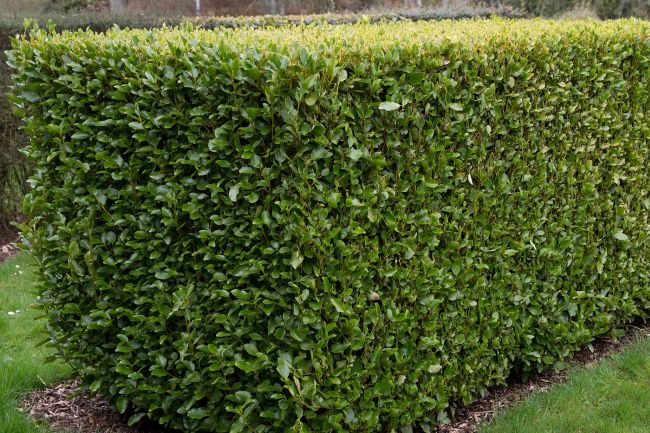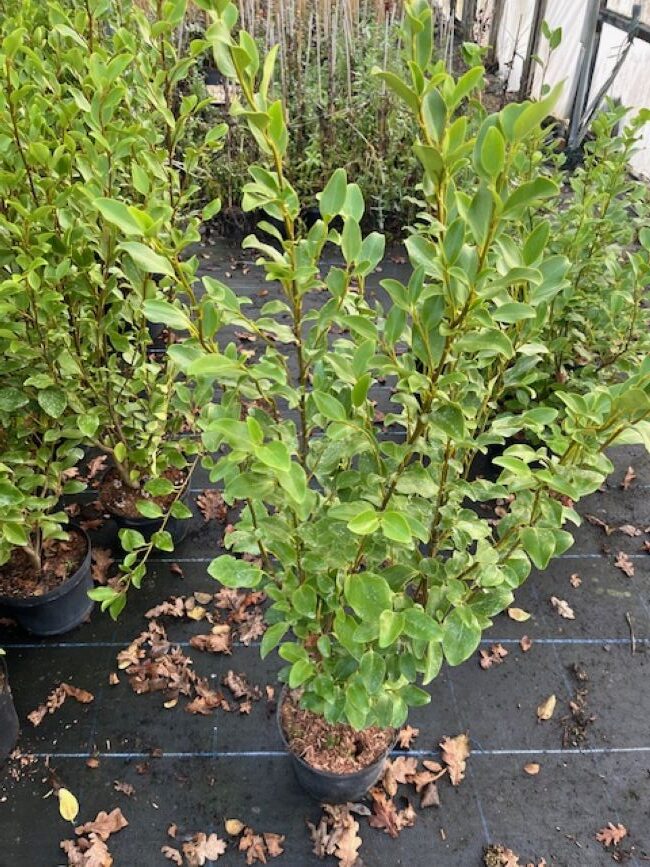Description
Griselinia littoralis, commonly known as Broadleaf, is an evergreen shrub or small tree native to New Zealand. Renowned for its glossy, oval-shaped leaves and dense growth habit, it is frequently used as a hedging plant. In optimal conditions, it can reach heights of 4–8 meters (13–26 feet), though it can be kept much lower with regular pruning. The leathery, lime-green foliage provides year-round color and forms a robust screen, making Griselinia littoralis an excellent choice for windbreaks and privacy hedges in coastal or inland gardens.
GardenAdvice Notes
Soil type
- Ideal Soil: Prefers well-drained soil with moderate fertility.
- pH Range: Tolerates a range from slightly acidic to slightly alkaline (approximately 6.0–7.5).
- Soil Amendments: Incorporate organic matter (such as compost) if the soil is poor or sandy, to help retain moisture and nutrients.
Location
- Light: Thrives in full sun to partial shade. Its foliage color is most vibrant in higher light conditions.
- Climate: Suited to mild, temperate regions and is generally hardy in USDA Zones 7–10 (or equivalent). It is notably tolerant of salt-laden winds, making it an ideal choice for coastal gardens.
- Exposure: Griselinia littoralis is wind-resistant and adapts well to exposed sites, especially near the coast.
Pest and disease problems
- Scale Insects: May appear as small, hard bumps on leaves or stems; can lead to sooty mold if untreated. Use horticultural oils or insecticidal soaps for control.
- Aphids: Can feed on young shoots and leaves, causing curling or distortion. Treat with insecticidal soap or strong water sprays.
- Root Rot: May occur in poorly drained, waterlogged soils. Ensure proper drainage to avoid fungal infections.
- Generally Pest-Free: Griselinia is usually trouble-free if grown in suitable conditions.
Propagation
- Semi-Ripe Cuttings: The most common method. Take cuttings in late summer when the wood is partially mature. Dip in rooting hormone and place in a free-draining mixture.
- Seed: Possible but less common. Seeds should be sown fresh; germination can be slow and variable.
- Layering: Less frequently used due to the ease of cuttings, but can be done by bending a low branch to the ground and covering it with soil until roots form.
Pruning, cutting back and dividing
- Pruning:
- Frequency: Typically once or twice a year to maintain a neat, formal hedge.
- Timing: Best done in late spring or early summer; a light trim can also be carried out in early autumn if required.
- Cutting Back: Griselinia tolerates moderate to hard pruning. If a hedge becomes overgrown, it can be cut back more severely to encourage fresh, dense regrowth.
- Dividing: Not commonly divided because of its shrub form and woody root system. Propagation via cuttings is more practical.
Summary
Griselinia littoralis is a versatile, hardy evergreen perfect for hedges or windbreaks, especially in coastal gardens. Its glossy, lime-green foliage creates a year-round backdrop, and it requires minimal care aside from occasional pruning to maintain shape. With proper soil preparation and a sunny to partially shaded site, this resilient plant will reward gardeners with a lush, enduring hedge that withstands wind and salt spray.
Please note our plants in most instances are delivered by our own GardenAdvice expert gardeners. Our standard UK delivery charge is £25 or if you are a MyGardenTeam member delivery is free
Our plants are guaranteed for 24 months for more details Click Here

























Reviews
There are no reviews yet.